Scientific name Juniperus Rank Genus | Division Pinophyta Higher classification Cypress | |
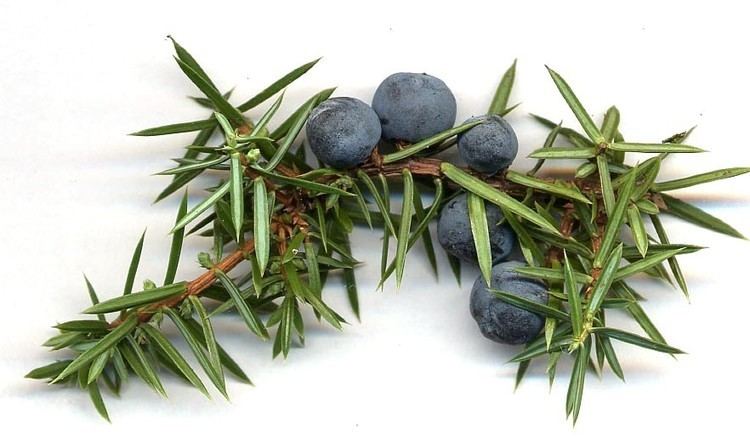 | ||
Lower classifications Common juniper, Juniperus chinensis, Juniperus sabina, Juniperus horizontalis, Juniperus virginiana | ||
Flower gardening tips how to grow juniper juniperus
Junipers are coniferous plants in the genus Juniperus /dʒuːˈnɪpərəs/ of the cypress family Cupressaceae. Depending on taxonomic viewpoint, between 50 and 67 species of juniper are widely distributed throughout the Northern Hemisphere, from the Arctic, south to tropical Africa, from Ziarat, Pakistan east to eastern Tibet in the Old World, and in the mountains of Central America. The highest-known Juniper forest occurs at an altitude of 16,000 feet (4,900 m) in south-eastern Tibet and the northern Himalayas, creating one of the highest tree-lines on earth.
Contents
- Flower gardening tips how to grow juniper juniperus
- Planting blue rug juniper
- Description
- Classification
- Cultivation and uses
- Allergenic potential
- References
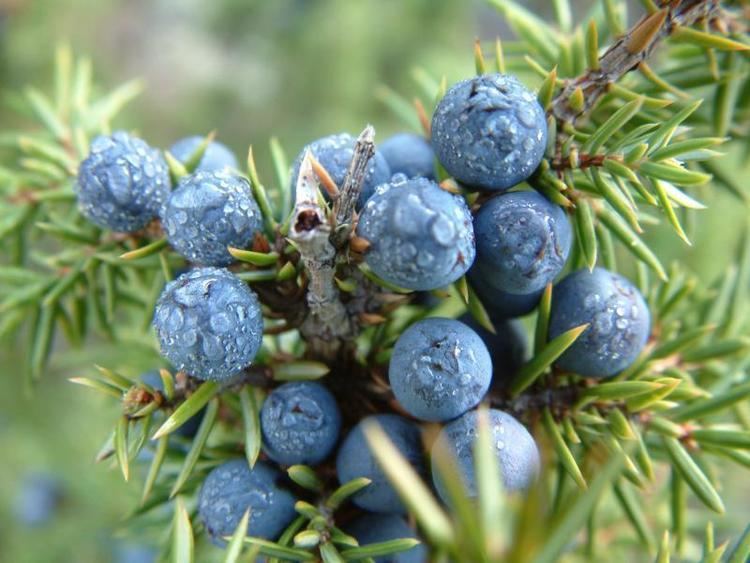
Planting blue rug juniper
Description

Junipers vary in size and shape from tall trees, 20–40 m (66–131 ft) tall, to columnar or low spreading shrubs with long trailing branches. They are evergreen with needle-like and/or scale-like leaves. They can be either monoecious or dioecious. The female seed cones are very distinctive, with fleshy, fruit-like coalescing scales which fuse together to form a "berry"-like structure, 4–27 mm (0.16–1.06 in) long, with 1–12 unwinged, hard-shelled seeds. In some species these "berries" are red-brown or orange but in most they are blue; they are often aromatic and can be used as a spice. The seed maturation time varies between species from 6–18 months after pollination. The male cones are similar to those of other Cupressaceae, with 6–20 scales.
In zones 7 through 10, junipers can bloom and release pollen several times each year. A few species of juniper bloom in autumn, while most species pollinate from early winter until late spring.
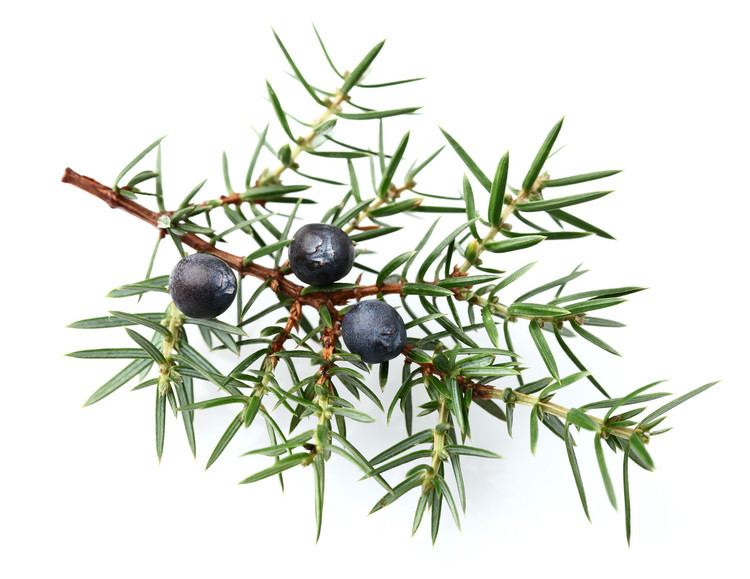
Many junipers (e.g. J. chinensis, J. virginiana) have two types of leaves: seedlings and some twigs of older trees have needle-like leaves 5–25 mm (0.20–0.98 in) long; and the leaves on mature plants are (mostly) tiny (2–4 mm (0.079–0.157 in)), overlapping and scale-like. When juvenile foliage occurs on mature plants, it is most often found on shaded shoots, with adult foliage in full sunlight. Leaves on fast-growing 'whip' shoots are often intermediate between juvenile and adult.
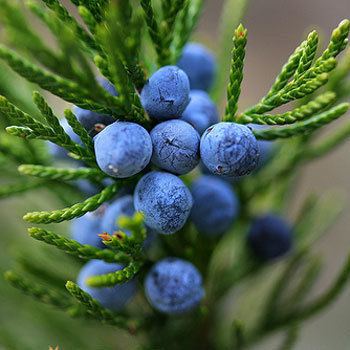
In some species (e. g. J. communis, J. squamata), all the foliage is of the juvenile needle-like type, with no scale leaves. In some of these (e.g. J. communis), the needles are jointed at the base, in others (e.g. J. squamata), the needles merge smoothly with the stem, not jointed.

The needle-leaves of junipers are hard and sharp, making the juvenile foliage very prickly to handle. This can be a valuable identification feature in seedlings, as the otherwise very similar juvenile foliage of cypresses (Cupressus, Chamaecyparis) and other related genera is soft and not prickly.
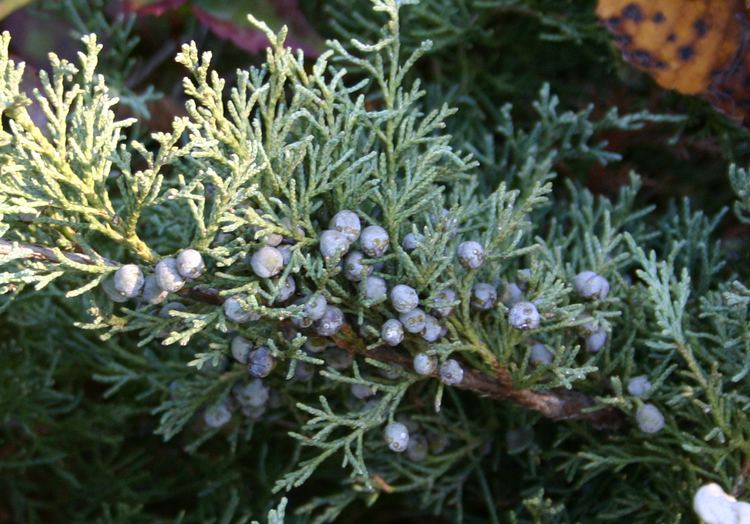
Juniper is the exclusive food plant of the larvae of some Lepidoptera species including Bucculatrix inusitata and juniper carpet, and is also eaten by the larvae of other Lepidoptera species such as Chionodes electella, Chionodes viduella, juniper pug and pine beauty; those of the tortrix moth C. duplicana feed on the bark around injuries or canker.
Classification
The number of juniper species is in dispute, with two recent studies giving very different totals, Farjon (2001) accepting 52 species, and Adams (2004) accepting 67 species. The junipers are divided into several sections, though (particularly among the scale-leaved species) which species belong to which sections is still far from clear, with research still on-going. The section Juniperus is an obvious monophyletic group though.
Cultivation and uses
Juniper berries are a spice used in a wide variety of culinary dishes and best known for the primary flavoring in gin (and responsible for gin's name, which is a shortening of the Dutch word for juniper, genever). Juniper berries are also used as the primary flavor in the liquor Jenever and sahti-style of beers. Juniper berry sauce is often a popular flavoring choice for quail, pheasant, veal, rabbit, venison and other meat dishes.
Many of the earliest prehistoric people lived in or near juniper forests which furnished them food, fuel, and wood for shelter or utensils. Many species, such as J. chinensis (Chinese Juniper) from eastern Asia, are extensively used in landscaping and horticulture, and as one of the most popular species for use in bonsai. It is also a symbol of longevity, strength, athleticism, and fertility.
Some junipers are susceptible to Gymnosporangium rust disease, and can be a serious problem for those people growing apple trees, the alternate host of the disease.
Some junipers are given the common name "cedar," including Juniperus virginiana, the "red cedar" that is used widely in cedar drawers. "Eastern redcedar" is the correct name for J. virginiana. The lack of space between the words "red" and "cedar" indicate that this species is not a true cedar, Cedrus.
In Morocco, the tar (gitran) of the arar tree (Juniperus phoenicea) is applied in dotted patterns on bisque drinking cups. Gitran makes the water more fragrant and is said to be good for the teeth.
Some Indigenous peoples, such as the Dineh, have traditionally used juniper to treat diabetes. Animal studies have shown that treatment with juniper may retard the development of streptozotocin-induced diabetes in mice. Native Americans have also used juniper berries as a female contraceptive. The 17th Century herbalist physician Nicholas Culpeper recommended the ripened berries for conditions such as asthma and sciatica, as well as to speed childbirth.
Juniper is one of the plants used in Scottish and Gaelic Polytheist saining rites, such as those performed at Hogmanay (New Year), where the smoke of burning juniper is used to cleanse, bless and protect the household and its inhabitants.
Juniper berries are steam distilled to produce an essential oil that may vary from colorless to yellow or pale green. Some of its chemical components are alpha pinene, cadinene, camphene and terpineol. Leaves and twigs of Juniperus virginiana are steam distilled to produce oil of juniper. Middle Tennessee and adjacent northern Alabama and southern Kentucky are the centers for this activity. The U.S. Forest Service has provided plans for the apparatus required. This work is typically done during periods of cold weather to reduce the loss of essential oil to evaporation, which is greater in warmer weather, and to take advantage of a time of year when labor might be more readily available.
Juniper in weave is a traditional cladding technique used in Northern Europe, e.g. at Havrå, Norway.
Allergenic potential
In drier areas, juniper pollen easily becomes airborne and can be inhaled into the lungs. This pollen can also irritate the skin and cause contact dermatitis. Cross-allergenic reactions are common between juniper pollen and the pollen of all species of cypress.
Monoecious juniper plants are highly allergenic, with an OPALS allergy scale rating of 9 out of 10. Completely male juniper plants have an OPALS rating of 10, and release abundant amounts of pollen. Conversely, all-female juniper plants have an OPALS rating of 1, and are considered "allergy-fighting".
